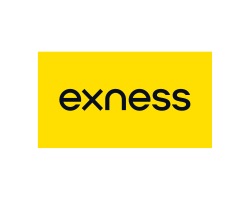1. How does Cumulative Volume Delta work?
CVD is calculated by taking the difference between the cumulative buy volume and the cumulative sell volume over a given period. The buy volume represents the total volume traded at or above the ask price, while the sell volume represents the total volume traded at or below the bid price.
By monitoring the changes in the cumulative volume delta, traders can identify shifts in market sentiment and potential turning points in price action. If the CVD is positive, it suggests that bullish sentiment is stronger, while a negative CVD indicates stronger bearish sentiment.

2. The Importance of Cumulative Volume Delta in Trading
2.1. Analyzing Market Strength through Cumulative Volume Delta
One of the key aspects of using Cumulative Volume Delta (CVD) is its ability to analyze market strength. By examining the cumulative volume delta, traders can assess whether buyers or sellers are dominating the market.
When the CVD is consistently rising, it indicates increasing buying pressure and a strong market. This suggests that buyers are stepping in and driving the price higher. On the other hand, a declining CVD suggests stronger selling pressure and a potential bearish market. It indicates that sellers are actively participating, pushing the price lower.
By identifying shifts in market strength through CVD, traders can adjust their trading strategies accordingly. In a strong market, they might consider adopting a trend-following approach, looking for opportunities to buy on pullbacks. Conversely, in a weak market, a more cautious approach is warranted, focusing on short-selling or waiting for confirmation of a trend reversal.
Using CVD in conjunction with other technical indicators can further enhance its effectiveness. For example, combining CVD with price oscillators such as the Relative Strength Index (RSI) or the Moving Average Convergence Divergence (MACD) can provide more robust signals for traders. This combination helps confirm the strength of a trend

2.2. Using Cumulative Volume Delta to Identify Reversals
Cumulative Volume Delta (CVD) can also be a useful tool for identifying potential price reversals. When the CVD exhibits divergence with the price, it can signal a shift in market sentiment.
For example, if the price is making higher highs, but the CVD is showing lower highs or decreasing, it may indicate a lack of buying conviction. This divergence suggests that the current uptrend may be losing momentum and could potentially reverse. Traders can view this as a warning sign and consider taking profits or even initiating short positions.
Conversely, if the price is making lower lows, but the CVD is showing higher lows or increasing, it may indicate underlying buying pressure. This bullish divergence suggests that the selling pressure may be waning, and a potential price reversal to the upside could occur. Traders can interpret this as a buying opportunity or a signal to exit short positions.

2.3. Incorporating Cumulative Volume Delta into Trading Strategies
Incorporating Cumulative Volume Delta (CVD) into trading strategies can provide valuable insights and improve decision-making. Here are some ways in which traders can use CVD to enhance their trading strategies:
- Confirmation of Trend Strength: CVD can be used to confirm the strength of a trend. When the CVD aligns with the direction of the price trend, it indicates that the trend is supported by strong buying or selling pressure. Traders can use this confirmation to stay in trades and avoid premature exits.
- Volume-Based Support and Resistance Levels: CVD can help identify significant support and resistance levels based on volume. When the CVD reaches extreme levels, such as a high positive value or a low negative value, it suggests the presence of significant buying or selling pressure. These levels can act as support or resistance areas, where price may reverse or consolidate.
- Divergence Confirmation: CVD can be used to confirm divergence patterns. When the price makes a higher high or lower low but the CVD fails to confirm, it suggests a weakening trend, potentially signaling a reversal. Traders can use this confirmation to adjust their positions or take contrarian trades.
- Identification of Breakouts: CVD can help identify potential breakout opportunities. When the price breaks out of a range or a consolidation pattern, traders can look at the corresponding CVD to validate the breakout. Suppose the CVD shows a significant increase in buying or selling volume during the breakout. In that case, it suggests that the move is supported by strong market participation, increasing the likelihood of a sustained move in the direction of the breakout.
| Use of CVD | Description |
|---|---|
| Confirmation of Trend Strength | CVD aligns with the price trend, indicating strong buying/selling pressure, confirming trend strength. |
| Volume-Based Support/Resistance Levels | CVD identifies support/resistance levels where price may reverse or consolidate, based on extreme volume levels. |
| Divergence Confirmation | CVD confirms divergence patterns, suggesting potential trend reversals when price and CVD don’t align. |
| Identification of Breakouts | CVD validates breakouts with significant volume changes, indicating strong market participation and trend sustainability. |
3. Settings For Cumulative Volume Delta
3.1. Selecting the Right Chart and Indicator Settings
When using cumulative volume delta, it is important to select the right chart and indicator settings for optimal effectiveness. Here are some tips to help you make the most out of this powerful tool:
- Choose the appropriate time frame: The period of time you select for your chart can significantly impact the accuracy of your analysis. A longer time frame such as a daily or weekly chart can provide a broader perspective of future price movement, while a shorter time frame like an intraday chart can help you identify short-term reversals or fluctuations.
- Adjust the cumulative volume delta settings: Most trading platforms allow you to customize the settings of the cumulative volume delta indicator. You can adjust variables such as the time period, volume type (tick, uptick, or downtick), and the threshold for significant volume changes. Experimenting with these settings can help you fine-tune the indicator to your trading style and preferences.
- Combine with other indicators: As mentioned earlier, using cumulative volume delta in conjunction with other technical indicators can provide added confirmation and enhance your analysis. Experiment with different combinations to see which indicators work best together for your trading strategy.
- Consider using multiple time frames: Looking at the cumulative volume delta across multiple time frames can provide a more comprehensive view of market activity. For example, if you see a bullish divergence on the daily chart but a bearish divergence on the weekly chart, it may indicate a potential reversal or slowdown in the current market trend.

| Aspect | Description | Optimal Values for Time Frames |
|---|---|---|
| Time Frame Selection | The chart time frame affects the analysis accuracy. | Intraday for short-term, Daily/Weekly for broader perspective |
| CVD Settings Adjustment | Customizing settings like time period and volume type. | Adjust according to trading style; no specific optimal value |
| Combining Indicators | Using CVD with other indicators for better analysis. | Depends on the trader’s strategy; no one-size-fits-all |
| Multiple Time Frames | Analyzing CVD across different time frames for market activity. | Use a combination of short and long time frames for a comprehensive view |
4. Key Indicators and Signals in Cumulative Volume Delta
4.1. Positive Delta as a Bullish Signal
Positive Delta in Cumulative Volume Delta (CVD) can be interpreted as a bullish signal. When the CVD shows a positive value, it indicates that buying volume is dominating the market. This suggests that there is strong demand for the asset, which can potentially lead to an increase in prices.
Traders can use positive Delta as a confirmation of an upward price trend. For example, if the CVD shows a positive value while the price is making higher highs and higher lows, it suggests that the bullish momentum is supported by increasing buying volume. This can be a strong indication to enter long positions or hold onto existing bullish trades.
Additionally, positive Delta can be used to identify buying opportunities during pullbacks or retracements. If the price experiences a temporary decline, but the CVD remains positive, it suggests that buying volume is still present in the market. This can indicate that the pullback is only temporary and that buying pressure may resume, presenting an opportunity to enter at a more favorable price.
4.2. Negative Delta as a Bearish Signal
A negative Delta in Cumulative Volume Delta (CVD) can be interpreted as a bearish signal. When the CVD shows a negative value, it indicates that selling volume is dominating the market. This suggests that there is strong supply of the asset, which can potentially lead to a decrease in prices.
Traders can use negative Delta as a confirmation of a downward price trend. For example, if the CVD shows a negative value while the price is making lower lows and lower highs, it suggests that the bearish momentum is supported by increasing selling volume. This can be a strong indication to enter short positions or hold onto existing bearish trades.
Additionally, negative Delta can be used to identify selling opportunities during temporary price rallies or retracements. If the price experiences a temporary increase, but the CVD remains negative, it suggests that selling volume is still present in the market. This can indicate that the rally is only temporary and that selling pressure may resume, presenting an opportunity to enter at a more favorable price.
4.3. Price x Delta Divergence as a Reversal Signal
Price x Delta Divergence is another useful tool for traders to spot potential trend reversals. This occurs when there is a discrepancy between the price movement and the Delta value in the Cumulative Volume Delta (CVD) indicator.
If the price is making higher highs, but the Delta value is making lower highs or staying stagnant, it suggests that the buying volume is decreasing or not keeping up with the price movement. This could indicate that the upward momentum is weakening and a potential reversal in trend may be imminent.
Conversely, if the price is making lower lows, but the Delta value is making higher lows or staying stagnant, it suggests that the selling volume is decreasing or not keeping up with the price movement. This could indicate that the downward momentum is weakening and a potential reversal to the upside may be in the cards.
Traders can use this Price x Delta Divergence as a signal to consider exiting or reversing their positions. For example, if the price is making higher highs while the Delta value is showing lower highs, a trader who is long in the market may consider closing their position or even entering a short position if there is further confirmation of a reversal. Similarly, if the price is making lower lows while the Delta value is showing higher
| Use of CVD | Description |
|---|---|
| Confirmation of Trend Strength | CVD aligns with the price trend, indicating strong buying/selling pressure, confirming trend strength. |
| Volume-Based Support/Resistance Levels | CVD identifies support/resistance levels where price may reverse or consolidate, based on extreme volume levels. |
| Divergence Confirmation | CVD confirms divergence patterns, suggesting potential trend reversals when price and CVD don’t align. |
| Identification of Breakouts | CVD validates breakouts with significant volume changes, indicating strong market participation and trend sustainability. |
5. How to Use Cumulative Volume Delta in Technical Analysis
5.1. Analyzing Cumulative Delta Values in Different Timeframes
When using cumulative volume delta in technical analysis, it’s essential to consider the timeframe you are analyzing. Cumulative Delta values can provide valuable insights into the overall market sentiment, but they can vary depending on the timeframe.
For short-term analysis, such as day trading or scalping, traders often look at intraday cumulative volume delta. This allows them to gauge the buying and selling pressure in the market, helping them make decisions on entering or exiting trades quickly.
On the other hand, for longer-term analysis, such as swing trading or position trading, traders may focus on cumulative volume delta over multiple days or even weeks. This provides a broader perspective on the overall market sentiment and can be useful in identifying significant shifts in supply and demand.
Regardless of the timeframe, it’s important to consider the context in which the cumulative volume delta is being analyzed. Is the market trending or range-bound? Are there any major news events or economic indicators that could impact market sentiment? Understanding these factors can help validate the signals provided by the cumulative volume delta indicator.
5.2. Understanding the Correlation between Price and Cumulative Delta
Understanding the correlation between price and cumulative delta is crucial when using this indicator in technical analysis. The relationship between price movement and cumulative delta can provide valuable insights into market dynamics.
In an uptrend, the price tends to rise while the cumulative delta also increases or remains positive. This indicates that buying pressure is strong and supports the upward price movement. Traders can interpret this as a signal to stay in long positions or even consider adding to their positions as the trend continues.
Conversely, in a downtrend, the price tends to decline while the cumulative delta decreases or stays negative. This suggests that selling pressure is dominant, confirming the downward trend. Traders may consider holding short positions or even look for opportunities to enter new short positions as the downtrend persists.
However, the real value of cumulative volume delta lies in its ability to identify divergences from price action, indicating potential reversals or trend shifts. Divergences occur when the price and cumulative delta show conflicting signals.
For example, if the price is making new highs, but the cumulative delta is showing lower highs or even declining, it may indicate that the buying pressure is diminishing. This could be a warning sign of a potential trend reversal or a significant pullback.
On the other hand, if the CVD is consistently falling, it suggests increasing selling pressure and a weaker market. This indicates that sellers are taking control and the price is likely to decline.
5.3. Using Cumulative Volume Delta with Other Technical Indicators
Using Cumulative Volume Delta with Other Technical Indicators
While cumulative volume delta can be a powerful indicator on its own, it is often used in conjunction with other technical indicators to confirm trading signals and enhance analysis.
One popular approach is to combine cumulative volume delta with traditional price-based indicators like moving averages or trend lines. For example, if the price is in an uptrend and the cumulative delta is also increasing, this can be seen as a strong bullish signal. Confirming this signal with a moving average crossover or a breakout above a trend line can provide additional confidence in the trade.
Another way to use cumulative volume delta is to compare it to other volume-based indicators, such as volume profile or volume oscillator. By looking at the relationship between cumulative delta and these indicators, traders can gain deeper insights into market dynamics.
For instance, if the cumulative delta is rising while the volume oscillator is also increasing, it suggests strong buying pressure and a healthy market. This can confirm the bullish signal and present an opportunity to enter long positions.
On the other hand, if the cumulative delta is declining while the volume profile shows significant selling volume at key price levels, it may indicate a potential reversal or a change in market sentiment. In such cases, traders may consider taking profits.











